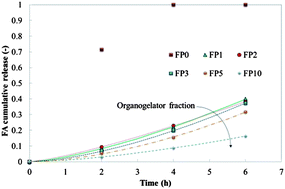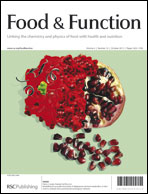Olive oil/policosanol organogels for nutraceutical and drug delivery purposes
Abstract
Low molecular weight organogels are semisolid systems structured by the assembly of molecules that crystallise under suitable process conditions. The inner microstructure of organogels is made up of a 3-D network, in which both an organic liquid solvent and other dispersed particles can be entrapped. In this work, olive oil organogels, structured from policosanol (a nutraceutical mixture of fatty alcohols), were studied in order to obtain the best formulation for producing a support for delivery of lipophilic agents (namely ferulic Acid) via oral administration. A rheological optimisation of the olive oil-policosanol organogel was first of all performed with Step Shear Rate Temperature Ramp tests. This provided important information on the policosanol fraction to be added to the system and on the onset of crystallisation temperature, an indirect measurement of the system melting point. It was found that a policosanol weight percentage of 0.03 was suitable to obtain contemporary semisolid organogels, consistent enough and thermally stable for human ingestion. In vitro tests on organogels loaded with ferulic acid were also carried out in order to simulate the oral intake of the nutraceutical compound. This evidenced a release mechanism determined by both erosion and diffusion; a good performance of gels and their ability to control the release rate through the degree of structuration were also observed.


 Please wait while we load your content...
Please wait while we load your content...